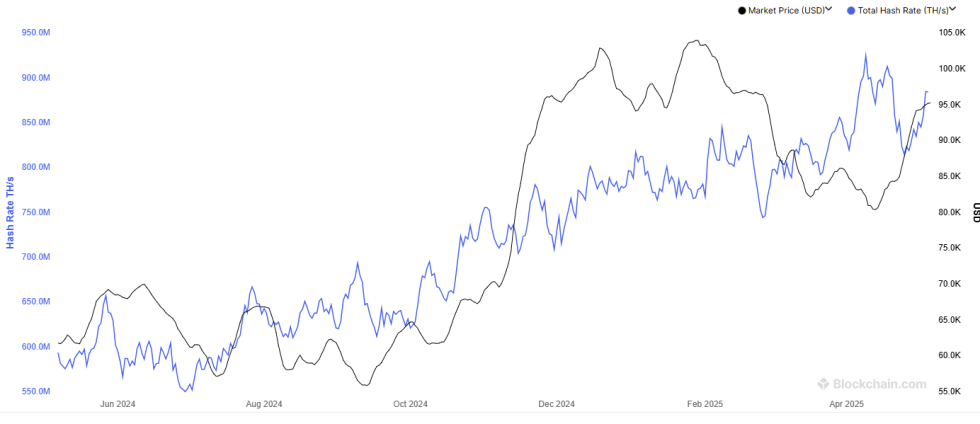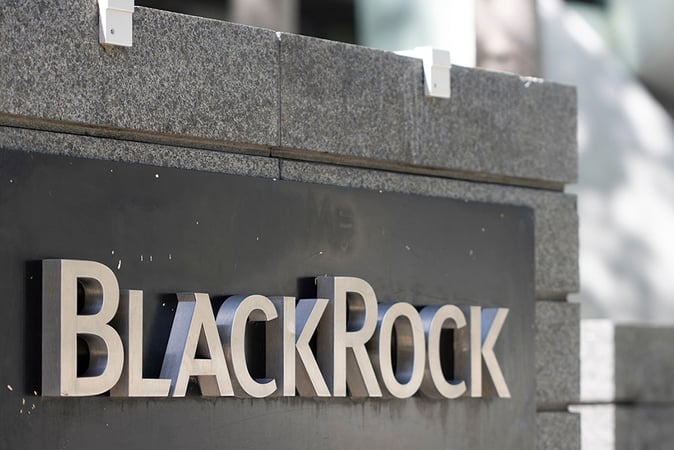
On-chain data shows the Bitcoin Hashrate is on the way up again as the Difficulty has gone through a negative adjustment.
Bitcoin Miners Seem To Be Back In Expansion Mode
On Saturday, May 3rd, the Bitcoin network went through its latest Difficulty adjustment and eased things up for the miners, breaking a streak of four consecutive increases prior to that. The “Difficulty” here is a feature built into the BTC blockchain that basically controls how hard the miners find it to mine blocks on the network. This metric’s value changes in response to the pace at which the miners are performing their duty.
The chain automatically adjusts its Difficulty about every two weeks and the rule that Satoshi wrote in for it to base these adjustments off is simple: keep the block time consistent around 10 minutes.
This means that when the miners go through blocks at a rate faster than 10 mins per block, the chain is forced to up its Difficulty. Similarly, it has to ease things up if the validators are being slow, so that they can get back up to the standard pace.
Miners become faster or slower at their task when the total computing power employed by them, known as the Hashrate, changes. As the below chart from Blockchain.com shows, miners were in a phase of rapid expansion earlier, which is why BTC had to up its Difficulty four times straight.

The trend in the 7-day average of the BTC Hashrate over the past year | Source: Blockchain.com
Now, the existence of Difficulty has one major consequence for the Bitcoin miners: no matter how much they invest into their facilities, they can’t collectively pull out more block subsidy than the network allows them to.
“Block subsidy” is the BTC reward that the miners receive as compensation for adding a block to the network. It makes up for the major part of the miner income, with the transaction fees occupying a smaller portion.
Since the Difficulty always brings the miners back to a speed of 10 minutes per block, these validators continue to receive about the same amount of this reward every day, regardless of the hashrate.
In other words, a higher amount of computing power competes for the same amount of revenue as before, whenever the Hashrate goes up (note that this is only true following the next Difficulty adjustment; miners can earn differently from the norm in the in-between period).
This suggests that, in theory, validators who fail to expand proportionately to the global Bitcoin Hashrate increase fall behind the competition and earn less income than before, since the collective BTC income of the miners is constrained.
Such miners who suffer from a revenue squeeze following a Difficulty increase might end up with no choice, but to disconnect from the network. From the Hashrate chart, it’s apparent that the indicator’s value crashed during the last-third of April. It’s possible that the large Difficulty increase was what triggered it.
With the Difficulty now finally observing a cooldown in response to this decline in the Hashrate, miners may once again be encouraged to add to their facilities. And indeed, the most recent trend in the 7-day average of the metric has been pointing in this direction so far.
BTC Price
Bitcoin has been pulling back on its recovery during the last few days as its price has dropped to the $93,900 mark.
Looks like the price of the coin has been showing bearish action in the last few days | Source: BTCUSDT on TradingView
Featured image from Dall-E, Blockchain.com, chart from TradingView.com

Editorial Process for bitcoinist is centered on delivering thoroughly researched, accurate, and unbiased content. We uphold strict sourcing standards, and each page undergoes diligent review by our team of top technology experts and seasoned editors. This process ensures the integrity, relevance, and value of our content for our readers.















